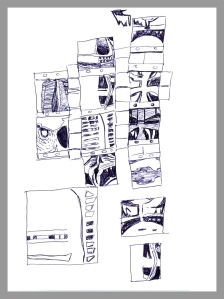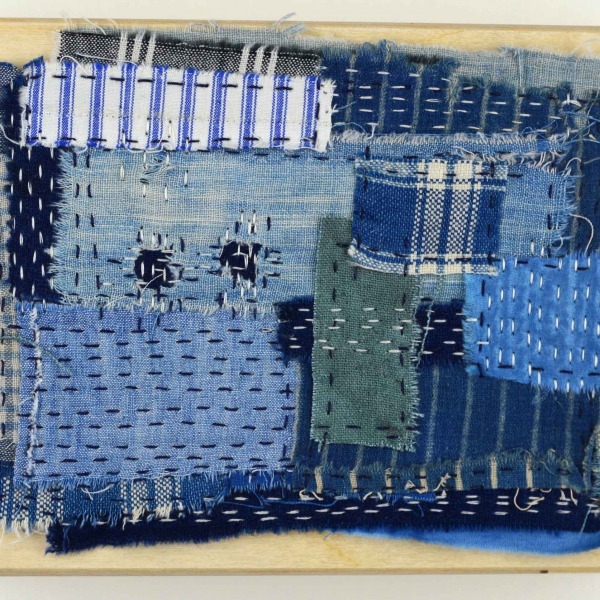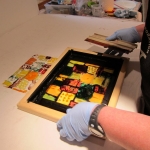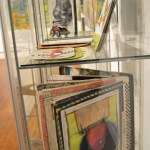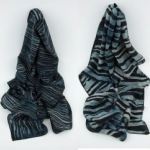I made this drawing one morning when I was staying in a downtown Denver high rise hotel. Upon opening the curtains, I was so taken by the abstract images I saw in the reflections of the windows in the building across the street, I sat down and started recording them on a small piece of card stock that I found in the room.
Drawing – The Artist’s act of thinking
Michael Gormley, Editor Director of American Artist Group, shares some interesting thoughts about drawing in an article he wrote:
“Practiced frequently and without inhibition, drawing represents the graphic remains of a thought or idea-hence its evolution ultimately aims to record not just the gesture of the hand but the inspired movement of the mind. Drawing is thus a powerful tool for recording the stages and end products of our imaginative thought processes; it is associated with the highest levels of human consciousness. In a sense, drawing is an artist’s act of thinking.”
I resonate with Michael’s statement, as well as with this one, from Cate Prato, Online Editor, Cloth Paper Scissor Today:
“Knowing ‘how to draw’ is not just about putting down an organized series of lines to create an image we recognize, it’s a way to organize and express our thoughts.”
So true. This is why drawing is such an important component within every artwork I make, whether that artwork is a hand-pulled print, piece of sculpture, or textile painting. It’s the inherent drawing within a piece that gives the viewer the most insight to the artist maker.
I am fascinated by other artists’ drawing qualities in their work. It’s the first thing I notice and most appreciate in other artists’ work because it reveals so much to me about the person who did the work, without them even being there to tell me about it in words. It takes courage to put your honest drawing in your work, because it is so revealing, and “speaks” for you visually.
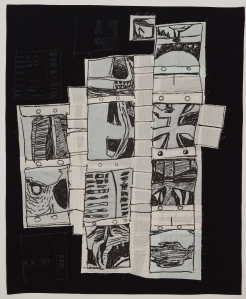
"5th Floor Reflections" ©Ayn Hanna, 43"x36", Textile painting (cotton fabric, cotton batting, cotton thread)
I made the textile painting above based on that quick little drawing of the window reflections. In the drawing, I really liked the abstract compositions within each window, the graphic quality, and the repetition of the hand drawn squares. The dual association of the repeating square format with art quilting seemed a natural segue for me to (literally) extend my drawing into a textile painting. And so I did.
I scanned my drawing and printed it out, and to my surprise, my old scanner read the drawing as a cut-out and printed the image with a black border framing the irregular shape of it. I realized I was looking at my mock-up for my new textile painting.
In a way, creating a textile painting of my drawing helped bring emphasis to it, objectifying it into something larger that feels like it has a better chance of being seen or noticed by others. And I think that’s a part of why all artists make art, at least I know it’s a part of why I do – to have a voice, share my thoughts, and participate in our society’s conversations.
